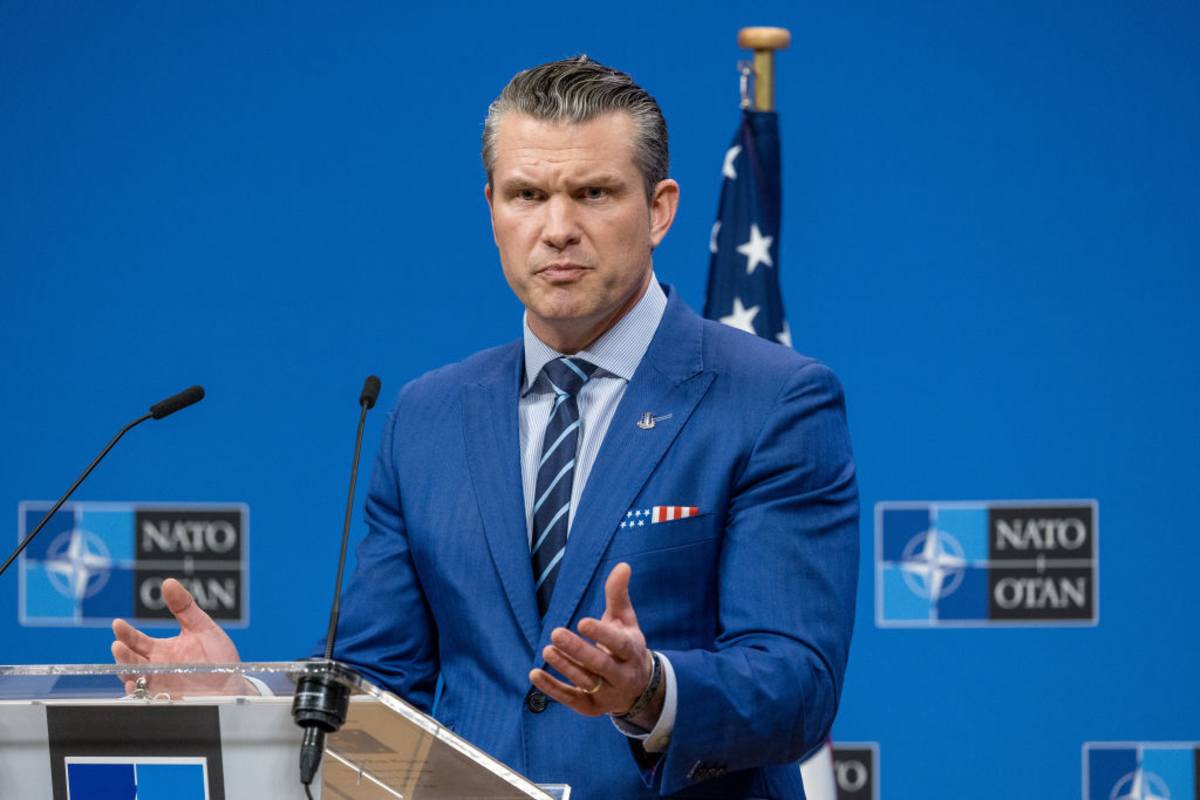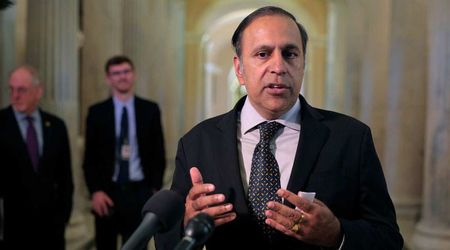Security experts floored by 'really scary' information revealed by Trump officials in Signal group chat

WASHINGTON, DC: Security experts were "floored" after it emerged that high-ranking officials in President Donald Trump’s cabinet spilled classified military intel in a private chat group on Signal—where a journalist happened to be lurking.
The fact that real-time updates on US airstrikes in Yemen against Houthi terrorists were leaked is "really scary," the security experts said.

The Signal group chat leak
It all started in an encrypted Signal chat where Defense Secretary Pete Hegseth and National Security Adviser Michael Waltz were dishing out the play-by-play on impending airstrikes. The only problem was that Walz had accidentally added Atlantic magazine editor-in-chief Jeffrey Goldberg into the group.
Goldberg published the entire exchange on Wednesday, March 26, putting the whole mess on blast. Let’s just say the messages were a little too detailed for comfort.
Hegseth laid it all out, timestamp by timestamp. “TIME NOW (1144et): Weather is FAVORABLE. Just CONFIRMED w/CENTCOM we are a GO for mission launch," he wrote.
“1215et: F-18s LAUNCH (1st strike package),” he continued, before adding, “1345: ‘Trigger Based’ F-18 1st Strike Window Starts (Target Terrorist is @ his Known Location so SHOULD BE ON TIME – also, Strike Drones Launch (MQ-9s).”

National security lawyer Dan Meyer said that the leaked info covered the method of targeting, the timeline, and even who pulled the trigger. “The pilots were using their sensors, using their triggers to confirm identification, and they let the drones deliver the weapons,” he told the New York Post.
It kept getting worse as the messages kept rolling. Hegseth went on to reveal that at 2:10 pm, more fighter jets took off. “More F-18s LAUNCH (2nd strike package),” he wrote.
“1415: Strike Drones on Target (THIS IS WHEN THE FIRST BOMBS WILL DEFINITELY DROP, pending earlier ‘Trigger Based’ targets),” the Pentagon leader continued. “1536 F-18 2nd Strike Starts – also, first sea-based Tomahawks launched.”

Security expert Meyer explained just how bad this was. “That’s when bombs would actually drop. So what that tells me is the pilots weren’t launching weapons," he said.
Meyer also pointed out that some of the most sensitive details were shockingly specific.
“Somebody flying the drone, you know, could be [operating out of] a strip mall down in Camden, New Jersey," he added.
Federal law categorizes classified information into three levels—confidential, secret, and top secret—and this most definitely falls into the “top secret” bucket.
According to the Office of the Director of National Intelligence, this kind of intel provides “indication or advance warning that the US or its allies are preparing an attack.”
Pete Hegseth tries to play it cool, but experts aren't having it

Pete Hegseth claimed that the strike plans were given “in real time,” and Pentagon spokesman Sean Parnell said it took place while the plan “was underway.” But the Signal time stamps indicate Hegseth sent the messages ahead of the first strike.
“Really scary that that went out over Signal because that reveals a method of targeting that you can read online in some places, but you really don’t want to know in specific instances when ‘trigger-based’ targeting is being done,” Meyer said.
Hegseth tried to play it cool, posting on X that the plans included “No names. No targets. No locations. No units. No routes. No sources. No methods. And no classified information."
“We will continue to do our job, while the media does what it does best: peddle hoaxes," he added.
So, let’s me get this straight. The Atlantic released the so-called “war plans” and those “plans” include: No names. No targets. No locations. No units. No routes. No sources. No methods. And no classified information.
— Pete Hegseth (@PeteHegseth) March 26, 2025
Those are some really shitty war plans.
This only proves…
Meyer clapped back. “This was the secretary of defense relaying operational information regarding our ongoing actions against a foreign adversary. It’s operational data. It’s about an ongoing mission. It was classified, and it doesn’t have to be marked. It doesn’t have to say secret or top secret on it. It was classified," he said.
He then dropped a brutal analogy.
"If you’re a sailor on the USS Ronald Reagan and you write home to Mama and you say the ship is going to make a port call in Rota, Spain, at the end of the deployment in a month — that’s classified information,” he explained.
“We used to lecture our men about not sending movement details even for something as silly as liberty call in a port in Spain, where the sailors are all going to go out and drink themselves blind on Saturday night. That’s still classified because it’s about the movement of our military units,” the expert continued.
“So all this talk about war plans and was there or was there not a declared war,” Meyer said, before adding, “All that is, is, novices: people who are not experienced in our military affairs, not understanding what they’re working with.”
Calls for accountability after Signal group chat leak

Turns out Vice President JD Vance, CIA Director John Ratcliffe, and Trump’s special envoy Steve Witkoff—who was literally in Moscow with Russian President Vladimir Putin at the time—were all part of the chat group on Signal.
“VP. building collapsed. Had multiple positive ID. Pete, Kurilla, the IC, amazing job,” Waltz messaged the group after the strike. “The first target — their top missile guy — we had positive ID of him walking into his girlfriend’s building, and it’s now collapsed," he added.

Meyer explained that this was what’s called a battle damage assessment (BDA), which is also classified.
“When you get to somebody having gone in the building, bomb gone off, building collapsed, that’s BDA,” he said, before adding, “That is classified because it’s about what we know about the success of our mission.”
“So you’re in a whole different world now,” he explained. “You’re not protecting that information because it could damage our operations. You’re protecting that information because we don’t want an enemy to know we know we succeeded, right?”
"You don’t want to give out your BDA — and that was giving out the BDA," he added.
“Our cybersecurity enemies work 24/7 to inflict harm on our government, on our critical infrastructure and our people,” said cybersecurity expert Michael Pastor.
“What they are thinking right now is that if the people at the apex of the national security apparatus in America are this careless with cybersecurity hygiene, can you imagine how many vulnerabilities there must be all the way through the ranks of the CIA, and the Department of Defense and the State Department?” he asked.
“What you have here is a leak of sensitive and classified information to a non-government entity,” he added. “People go to jail for that.”
Meyer’s final verdict is that Hegseth and Waltz should've known better.
“The secretary of defense should have known better, not only because he’s the secretary of defense, but he’s a veteran. He has been trained in this already,” Meyer explained.
“He didn’t serve as some special adviser to some donut-eater in the [Pentagon] E Ring. He actually was out there with boots on the ground. So he knew better. And the same with the national security adviser. His whole job is to set up secure communications for the president," he said.
“All these people have walked the president off the plank. He deserves better from his advisers," he concluded.










